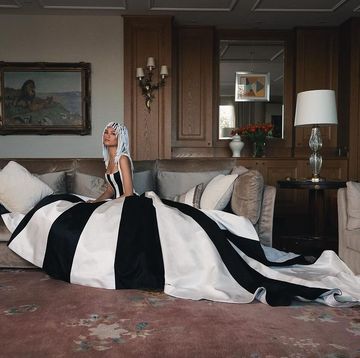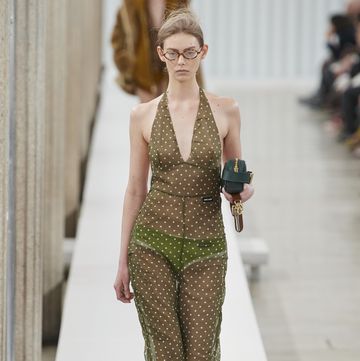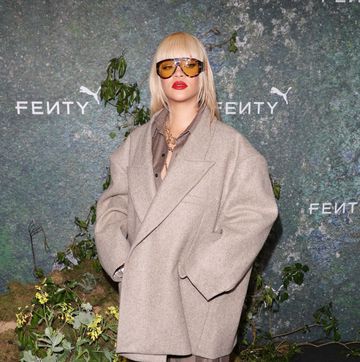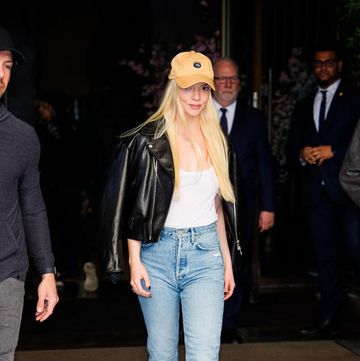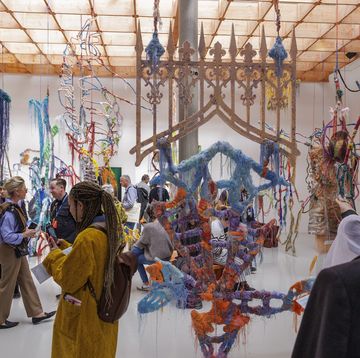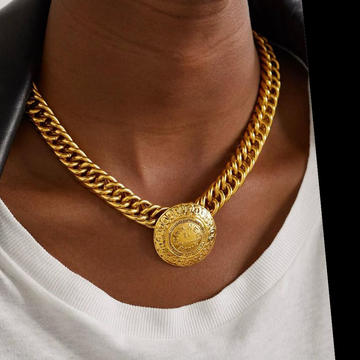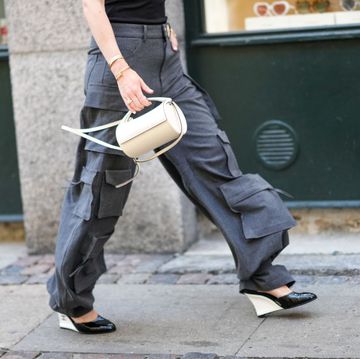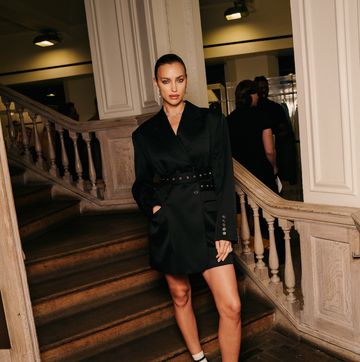It was the show every fashion insider was gasping to see: John Galliano’s comeback might as well have been called Mission Margiela, so meticulous was the strategy behind his re-entry into the fashion industry, which yesterday resulted in his Artisanal (couture) collection for Maison Margiela. It was, in every way imaginable, a determined attempt to wipe the slate clean.
For one thing, it couldn’t have been stranger to witness John Galliano take his bow at the foot of the runway – blink and you would have missed him. A brief nod of acknowledgement to the heavyweight industry audience, and he was gone. The designer had chosen to attire himself in a humble white lab coat, in keeping with the house’s uniform policy first introduced by its founder, Martin Margiela. Not for him the curtain calls of old, flanked by bodyguards, baring an oiled chest and, ‘in character’, wearing the finale outfit of whatever outré theatrical inspiration lay behind the show.
The set was equally low-key. We were in an ultra-modern high rise in London’s Victoria, where a single front row flanked the runway, its only adornment a silver tiled floor and film lights. Not the overblown staging of Galliano’s Dior shows. This was practically sterile – as safe, unshowy and inconspicuous as it is possible for a fashion show to be. Any atmosphere was generated by the expectation of the carefully selected audience, which included Kate Moss and fellow designers Alber Elbaz, Christopher Bailey, Manolo Blahnik and Rifat Ozbek.
And what of the fashion? An orgy of theatrical costume? A reprisal of Martin Margiela’s finest moments as seen through Galliano’s eyes? Or an opportunity for self-analysis, Galliano taking us back to his glory years? It turned out to be more of the latter, recalling his Saint Martins graduation collection, but as tightly controlled and as beautifully restrained as Galliano is ever likely to be. As he put it, in the show notes: ‘A process of discovery, returning to one’s roots, deconstructing and constructing a new story for Margiela.’
The clip-clop of towering carved heels could be heard before we even clapped eyes on the first model who stepped out in a sculpted sleeveless jacket, embroidered with black lacquered toy cars. He said he wanted to approach ‘tailoring, techniques, craftsmanship like a new explorer or painter. One who sees beauty in things that are often taken for granted, giving everything a newly enriched life.’ On the one hand, the clothes came unravelled and deconstructed to within an inch of their lives and, on the other, they were distilled to their purest form – a fitting metaphor for Galliano’s creative rebirth and simultaneous cleansing. So a jigsaw of lacquered shells and tumbling waves of fabric was followed by a pristine black tailored trouser suit or a startlingly simple column of scarlet velvet.
The finale of toiles (the tailor’s prototypes) said it all. Every model re-emerged in deconstructed pattern pieces, showing the marks and mistakes of their master – these were the physical manifestation of Galliano’s transgression and atonement: ‘marching in honest testimony of the process, the trials and errors, the time and emotion behind each cut, each line, each vision.’
Given the context in which we saw it, the show will go down in fashion history. It was perfectly pitched in terms of Galliano’s contrition but this overshadowed any explosions of creativity, which remained all too self-consciously repressed. Let’s hope that, in time, with Galliano’s redemption comes the confidence to let rip – on the catwalk, that is – with the full force of his legendary ingenious vision.
Gif above all Imaxtree.com

